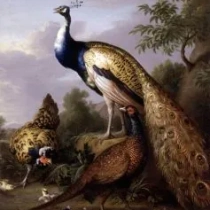Birth of Venus (La Nascita di Venere)
The "Birth of Venus" by Sandro Botticelli is a remarkable masterpiece of the Italian Renaissance. Created in the mid-1480s, this iconic painting depicts the mythological birth of Venus, the goddess of love and beauty, as she emerges from the sea foam on a scallop shell, surrounded by allegorical figures and mythological creatures.
Botticelli's portrayal of Venus is captivating, with her serene and ethereal beauty, symbolizing the ideal of feminine grace and allure. The composition is meticulously balanced, with graceful lines and delicate forms, showcasing Botticelli's exceptional skill in capturing human anatomy and movement.
The use of vibrant colors, particularly the pearly luminescence of Venus' skin and the cascading flow of her golden hair, creates a sense of otherworldly beauty. The soft, dreamlike atmosphere evokes a sense of timeless elegance and mythical enchantment.
Botticelli's "Birth of Venus" displays a harmonious blend of classical mythology and Christian symbolism, reflecting the intellectual and cultural interests of the Renaissance period. The painting's mythological subject matter is presented with a sense of purity and idealism, characteristic of the Renaissance fascination with ancient Greek and Roman culture.
Furthermore, the painting's composition and stylistic features, such as the lyrical movements of the figures and the use of linear perspective, demonstrate Botticelli's innovative approach to art, contributing to the enduring appeal of the "Birth of Venus."
Overall, Botticelli's "Birth of Venus" is a testament to the artist's ability to imbue classical subjects with a profound sense of grace, elegance, and spiritual beauty, making it a quintessential work of the Italian Renaissance and a timeless symbol of artistic excellence.







No Comments Yet...